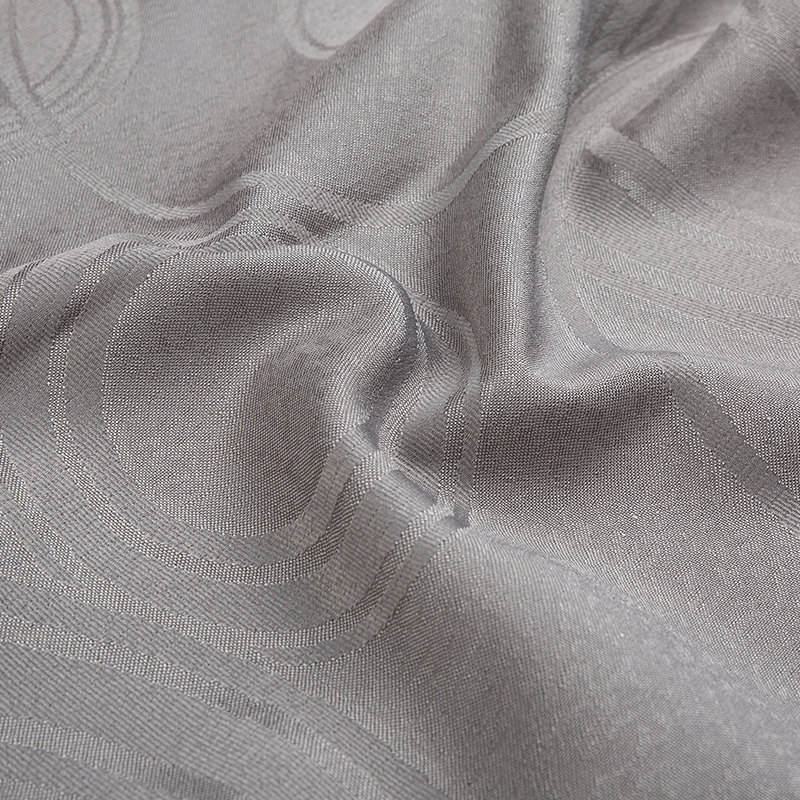Premium quality since 2002!
Different curtain fabrics, or drapery materials, each have unique characteristics that impact their look, feel, and functionality. Choosing the right fabric is essential for achieving your desired aesthetic, controlling light and privacy, and ensuring your curtains hang beautifully. Let's explore some of the most popular types.
Lightweight Fabrics
Lightweight curtain fabrics are excellent for creating a soft, airy feel in a room. They let natural light filter through, making them perfect for living rooms or spaces where you want to maintain a bright, open atmosphere.
-
Cotton: A versatile and popular choice, cotton is easy to clean and drapes well. It can be found in various weights and weaves, from light, breathable sheers to heavier, more opaque options. Cotton is a great option for a casual, comfortable look.
-
Linen: Known for its natural, textured appearance, linen gives a relaxed, organic feel. It’s highly breathable and becomes softer with each wash. Linen curtains, sometimes called window treatments, are ideal for a rustic or minimalist aesthetic, though they tend to wrinkle easily, which is part of their charm.
-
Sheers: These are very thin, transparent fabrics like voile, lace, or gauze. Sheer curtains provide a delicate, ethereal look, offering a degree of privacy without blocking natural light. They're often used as a layer underneath heavier curtains for a multi-functional window design.
Medium-Weight Fabrics
Medium-weight fabrics are the most common choice, offering a balance between light control and a structured drape. They provide more privacy than lightweight options and are suitable for most rooms in the house.
-
Polyester: This synthetic fabric is highly durable, resistant to wrinkles, shrinking, and stretching. It's easy to care for and is available in a vast range of colors and patterns. Polyester curtains are a practical and budget-friendly choice that works well in almost any setting.
-
Velvet: A heavier, luxurious fabric with a dense pile, velvet offers excellent insulation and light blocking. It's known for its rich, soft texture and creates a very formal and elegant look. Velvet window coverings are perfect for bedrooms or dining rooms where you want to add warmth and a touch of drama.
-
Silk: Silk curtains are a premium choice, offering a beautiful sheen and a sophisticated drape. They are a delicate fabric, however, and can be sensitive to direct sunlight, which can cause them to rot. For this reason, silk curtains are often lined to protect them and give them more body.

Heavyweight Fabrics
Heavyweight fabrics are the go-to for maximum light blocking, sound dampening, and insulation. They create a dramatic, opulent feel and are often used in bedrooms or home theaters.
-
Blackout Fabrics: Specifically engineered to block 100% of light, these fabrics are a must-have for anyone who needs to sleep in a completely dark room or wants to protect furniture from sun damage. Blackout curtains are often made from dense, synthetic materials and can also have insulating properties.
-
Brocade: A heavily woven fabric with a raised pattern, brocade is a traditional and formal choice. It's often made from silk or a silk blend and is best suited for ornate or classical interior styles. These decorative textiles make a bold statement.
-
Damask: Similar to brocade but with a more subtle, reversible woven pattern, damask offers an elegant, historical feel. It's a durable fabric that works well in formal living spaces.
When selecting your curtain material, consider not only the fabric type but also the weight, weave, and whether it’s lined. A lining can protect the fabric, enhance its drape, and provide extra insulation. Ultimately, the best fabric choice depends on your specific needs for light, privacy, and the overall style you want to achieve in your home.

 English
English 简体中文
简体中文









